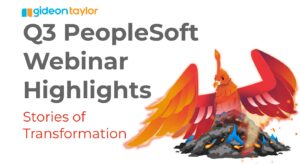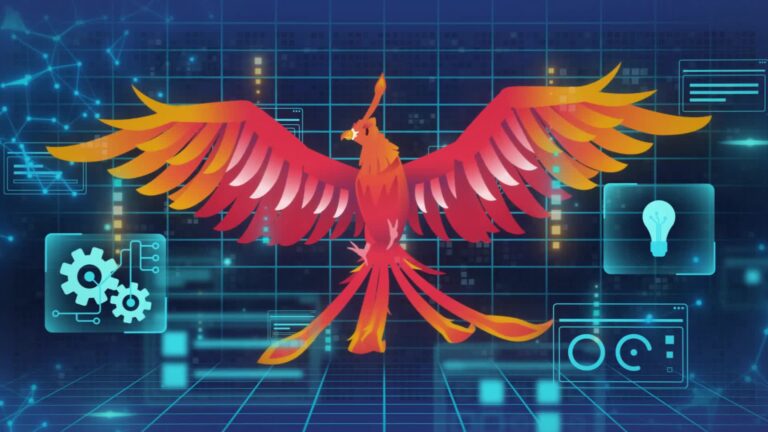Every year, hundreds of climbers attempt Mount Everest. The mountain doesn’t care about their ambition, preparation, or organizational backing. Statistics tell a sobering story: climbers with experienced Sherpa guides reach the summit 85% of the time. Those attempting it alone? Less than 30% succeed—and that’s if they survive.
Your PeopleSoft implementation faces remarkably similar odds. Industry research reveals that 70% of ERP projects fail to meet their business case goals. Not because organizations lack capability or resources, but because they lack guides who know every crevasse, every weather pattern, every critical decision point along the ascent.
The difference between reaching your summit and becoming another cautionary tale? Having a Sherpa who’s made the climb before.
The Death Zone: Where First-Time Climbers Fail
On Everest, climbers enter the “death zone” above 26,000 feet, where oxygen levels drop so low that critical decision-making becomes nearly impossible. Your body starts dying. Experienced Sherpas recognize the signs immediately—they’ve seen hundreds of climbers face these exact moments.
PeopleSoft implementations have death zones too. That moment when your go-live date approaches and integration testing reveals data migration issues you didn’t anticipate. When customizations conflict with a critical delivered feature. When user adoption metrics show your carefully planned change management strategy isn’t working.
First-time implementers make predictable mistakes in these moments:
They double down on the original plan rather than adapting to reality. A large government organization discovered their benefits specialists were spending an entire day processing what should take an hour. Their internal team kept troubleshooting the delivered functionality rather than recognizing they needed process transformation—the very situation GT eForms was designed to solve.
They attempt to configure their way out of fundamental design flaws. Higher education institutions often customize academic calendar logic to match legacy processes, not realizing they’re creating technical debt that will multiply with every future upgrade. Experienced PeopleSoft consultants recognize when to challenge business requirements rather than simply implement them.
They underestimate the oxygen requirements for the final push. That last 10% to go-live consumes 50% of project resources. Organizations discover too late that their internal team lacks the specialized expertise for performance tuning, security hardening, or managing the complex cutover sequence.
Why Experience Matters: What 20 Years Teaches About PeopleSoft
Mount Everest’s Sherpa families have guided climbers for generations. They inherit knowledge: which routes work in different seasons, how bodies respond to altitude, what weather patterns signal danger. They’ve accumulated wisdom through decades of both successes and tragedies.
Expert PeopleSoft consulting works the same way. Gideon Taylor’s consultants average 15+ years with the platform—they’ve guided implementations through every type of challenge:
They’ve seen your specific scenario play out before. When a healthcare organization wrestles with HIPAA compliance while integrating clinical systems, experienced consultants don’t need to research solutions—they’ve solved this exact challenge at dozens of similar organizations. They know which architectural approaches work and which create ongoing maintenance nightmares.
They recognize early warning signs that internal teams miss. Veteran PeopleSoft consultants can review your project plan and immediately spot the timeline compression that will force corner-cutting during testing. They see the scope creep hiding in “minor enhancements.” They identify the integration dependencies that your project plan treats as parallel when they’re actually sequential.
They’ve learned from both successes and failures. The Birmingham City Council ERP disaster—with costs ballooning from £19 million to £130 million—taught valuable lessons about governance, customization limits, and organizational readiness. Successful implementations at institutions like UC Berkeley, which eliminated 250,000+ paper forms, demonstrated the power of process transformation over brute-force automation.
This accumulated knowledge doesn’t come from reading case studies. It comes from being present when a fix almost breaks production. From seeing how users actually behave versus how project sponsors assume they’ll behave. From understanding which corners can be cut safely and which are load-bearing walls.
The Sherpa’s Advantage: Pattern Recognition at Scale
Sherpas can read Everest’s weather with uncanny accuracy because they’ve observed thousands of weather cycles. They recognize subtle signs that tomorrow’s “clear forecast” might actually bring dangerous conditions.
Experienced PeopleSoft implementation consultants develop similar pattern recognition. They spot risks in your first planning meeting that won’t manifest for six months—but will. They recognize when “leadership alignment” exists in PowerPoint but not in practice. They identify which organizational dynamics will help versus hinder your implementation.
This pattern recognition accelerates every phase:
Planning: Where first-time teams might spend months documenting current-state processes, experienced consultants quickly identify which processes matter and which are just noise. They structure project governance that actually makes decisions rather than multiplying bureaucracy.
Configuration: Rather than discovering through trial-and-error which PeopleSoft features work together seamlessly, consultants leverage configurations they’ve proven across dozens of implementations. They know which customizations introduce acceptable technical debt versus which will haunt your upgrade cycles forever.
Testing: Veteran consultants have mental checklists of edge cases that aren’t in your test scripts. They know which integration scenarios reliably break under production load. They’ve seen enough go-live surprises to test for things internal teams don’t think to check.
Change Management: Experience teaches which user adoption strategies actually work versus which sound good in theory. Consultants recognize when training is insufficient, when communication isn’t reaching the right audiences, and when “resistance to change” actually signals legitimate design problems rather than user stubbornness.
Base Camp to Summit: The Guided Journey
Everest climbers spend weeks acclimating at base camps before attempting the summit. Rush the process, and your body fails. Experienced Sherpas structure the ascent to maximize success probability—they know exactly when to push forward and when to wait.
Your PeopleSoft journey follows similar phases, each requiring specific expertise:
Base Camp (Planning & Design): This is where strategic advisory pays dividends. Experienced consultants help you set realistic objectives, identify which battles to fight, and structure governance that facilitates rather than impedes decisions. They challenge assumptions early when course corrections cost hours, not months.
Lower Camps (Build & Configure): Here’s where specialized PeopleSoft expertise accelerates progress. Rather than your team learning through expensive mistakes, consultants leverage proven patterns and configurations. They focus your customization efforts on genuine differentiators rather than rebuilding features that already exist.
High Camp (Testing & Training): This phase separates successful implementations from failures. Experienced consultants bring testing methodologies refined across hundreds of projects. They identify gaps in your training strategy before user adoption metrics reveal them. They recognize when you’re ready for go-live versus when you’re convincing yourself you’re ready.
Summit Push (Go-Live & Stabilization): The final ascent requires the most experienced guides. PeopleSoft consultants who’ve managed dozens of cutovers recognize which issues require immediate action versus which can wait. They keep teams focused when exhaustion sets in. They make split-second decisions based on pattern recognition that only comes from experience.
Descent (Optimization & Evolution): Many climbers die on the descent—after summiting, they relax their vigilance. Similarly, organizations often understaff post-go-live support. Managed services ensure you don’t lose critical expertise exactly when system stability depends on it.
The Right Guide for Your Ascent
Not all Sherpas are equal. Some specialize in specific routes. Some excel at supporting commercial expeditions versus technical climbs. The best matches align guide expertise with climber needs.
Gideon Taylor’s PeopleSoft consulting practice brings specialized expertise to specific sectors. If you’re in higher education, you need consultants who understand FERPA compliance, academic calendars, and student lifecycle complexity—not just generic ERP knowledge. Government implementations require expertise in procurement compliance, union rules, and budget cycle constraints. Enterprise organizations need consultants who’ve managed the scale and complexity of global operations.
Beyond sector expertise, modern PeopleSoft implementations require guides familiar with the full technological ecosystem. Intelligent process automation can eliminate manual bottlenecks that implementations once accepted as inevitable. Experience transformation addresses the user adoption challenges that derail otherwise successful technical implementations. Cloud migration strategies fundamentally change implementation approaches.
Your Summit Awaits
Everest doesn’t get easier with time—if anything, changing weather patterns make it more unpredictable. But with the right Sherpa, with proper preparation, with realistic timelines, reaching the summit becomes not just possible but probable.
Your PeopleSoft implementation faces similar realities. The platform’s complexity hasn’t decreased. User expectations continue rising. Budget pressures intensify. But organizations that invest in experienced PeopleSoft consulting guidance achieve success rates that mirror guided versus unguided Everest attempts.
The question isn’t whether you’re capable of the climb—you absolutely are. The question is whether you’ll attempt it with a guide who’s summited hundreds of times before, who knows every critical decision point, who can read the warning signs you don’t yet recognize.
Because at 26,000 feet, when oxygen deprivation impairs judgment and your entire project depends on the next decision, that’s not the time to wish you’d hired a Sherpa.
Ready to start your ascent? Connect with our PeopleSoft consulting team to discuss your specific implementation challenges and how our experience can accelerate your success.






